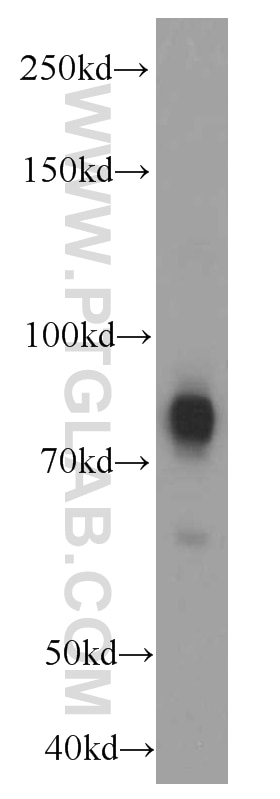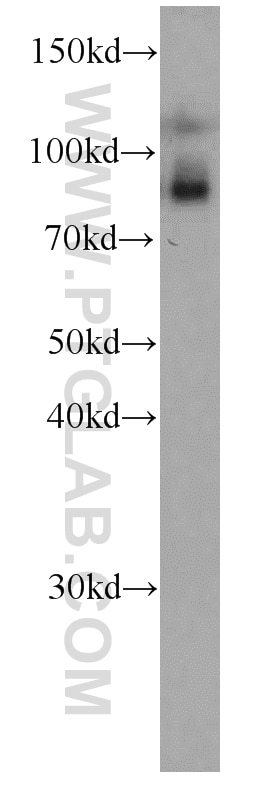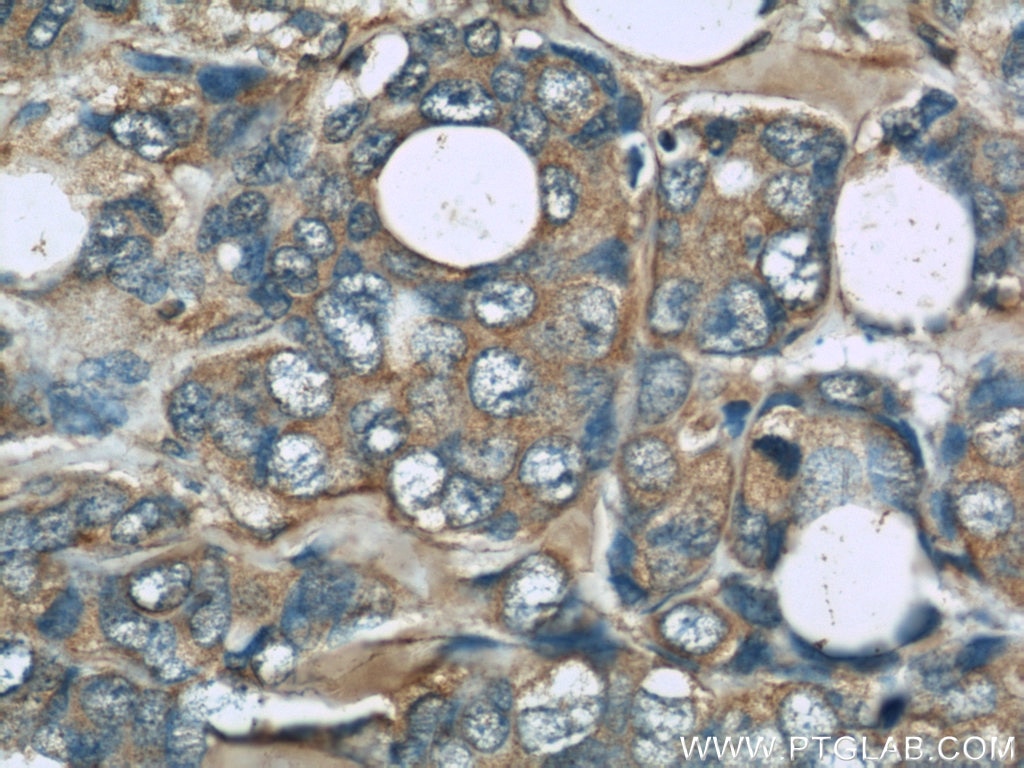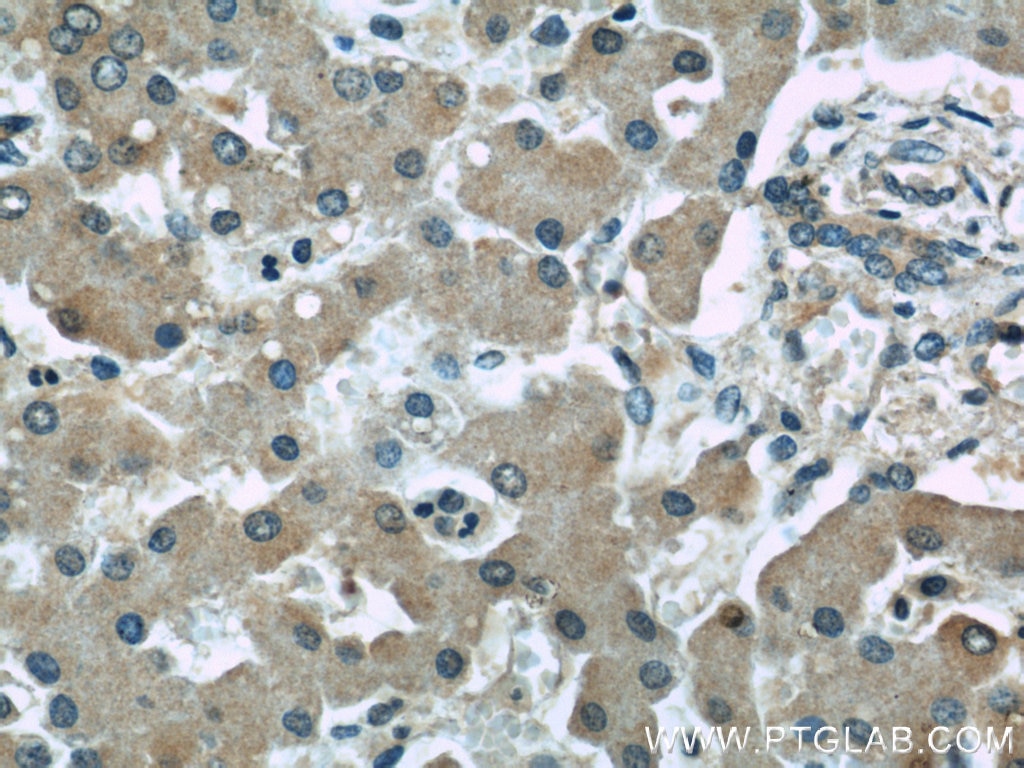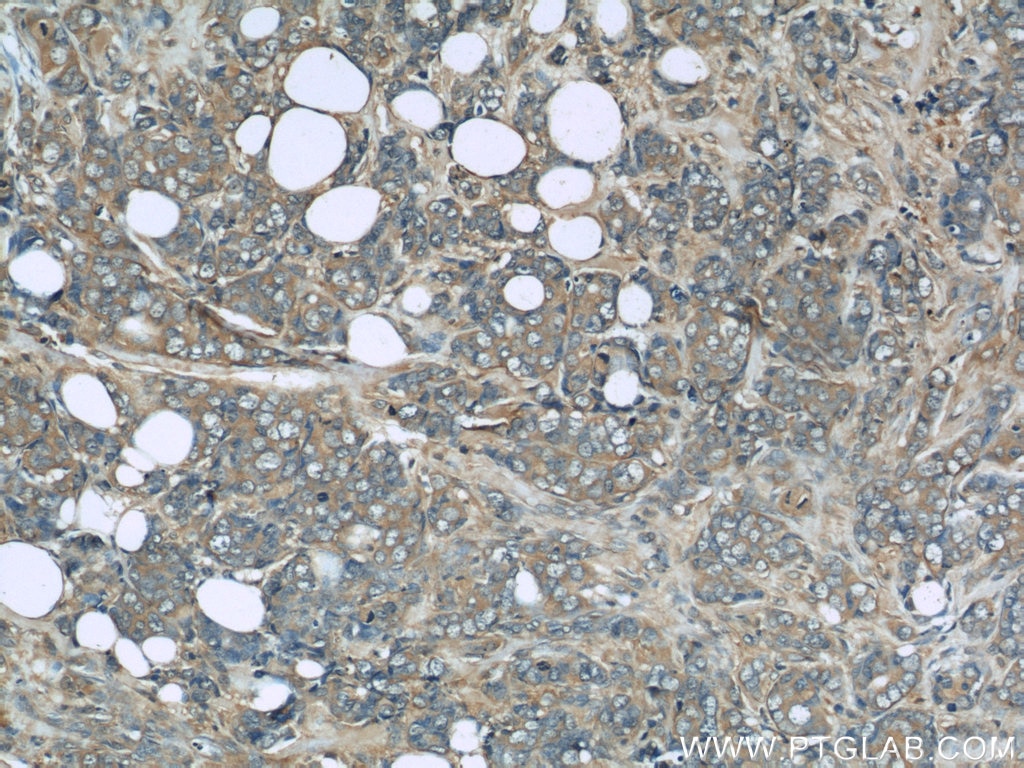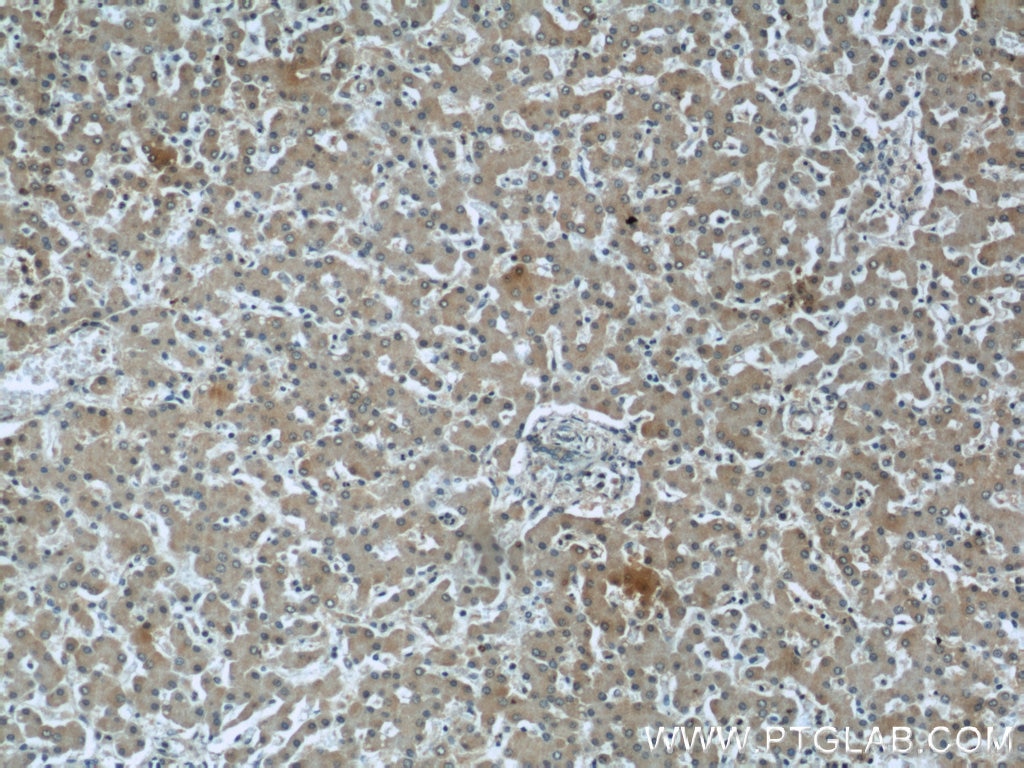Validation Data Gallery
Tested Applications
Recommended dilution
| Application | Dilution |
|---|---|
| It is recommended that this reagent should be titrated in each testing system to obtain optimal results. | |
Product Information
66138-1-PBS targets TRPC4AP in WB, IHC, Indirect ELISA applications and shows reactivity with human samples.
| Tested Reactivity | human |
| Host / Isotype | Mouse / IgG3 |
| Class | Monoclonal |
| Type | Antibody |
| Immunogen | TRPC4AP fusion protein Ag18772 相同性解析による交差性が予測される生物種 |
| Full Name | transient receptor potential cation channel, subfamily C, member 4 associated protein |
| Calculated molecular weight | 797 aa, 91 kDa |
| Observed molecular weight | 82 kDa |
| GenBank accession number | BC013144 |
| Gene Symbol | TRPC4AP |
| Gene ID (NCBI) | 26133 |
| RRID | AB_2881537 |
| Conjugate | Unconjugated |
| Form | Liquid |
| Purification Method | Protein A purification |
| UNIPROT ID | Q8TEL6 |
| Storage Buffer | PBS only , pH 7.3 |
| Storage Conditions | Store at -80°C. |
Background Information
TRPC4AP, also named as C20orf188 and TRRP4AP, is a substrate-specific adapter of a DCX (DDB1-CUL4-X-box) E3 ubiquitin-protein ligase complex required for cell cycle control. TRPC4AP participates in the activation of NFKB1 in response to ligation of TNFRSF1A, possibly by linking TNFRSF1A to the IKK signalosome. The calculated molecular weight of TRPC4AP is 91 kDa. Western blot analysis detected a protein of about 82 kDa expressed in several mouse cell lines and in a human promonocytic cell line.
